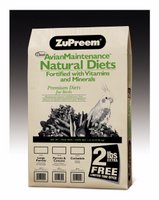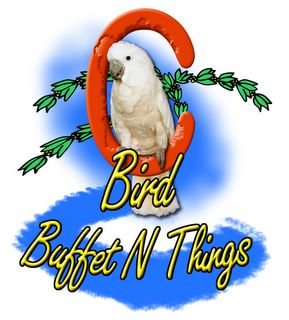
The Parrot Problem Solver
Finding Solutions to Aggressive Behavior
by Barbara Heidenreich
Hardcover: 192 pages
Publisher: TFH Publications (June 30, 2005)
Language: English
ISBN: 0793805627
When not properly trained and socialized, parrots are prone to developing a number of behavioral problems, including aggression and self-mutilation. Many owners face these problems and the frustrations that come along with them, and find themselves desperately in need of expert advice. Barbara Heidenreich arms her readers with the information they need to turn their pugilistic parrot into a feathered friend. Some of the topics include:
The Parrot Problem Solver: Finding Solutions to Aggressive Behavior is a one-stop resource for bird owners frustrated by problem behavior. By following the author's tips and techniques, any owner can learn how to keep a companion parrot from biting, screaming, or lunging, and turn a beastly bird into an avian angel.
About the Author Barbara Heidenreich is a professional animal trainer and founder of Animal Training and Consulting Services, which provides animal training workshops to zoos and other wildlife facilities. She has written and lectured extensively on the training of parrots. Heidenreich is the president elect of the International Association of Avian Trainers and Educators.
 Good Bird
Good Bird
A Guide to Solving Behavioral Problems in Companion Parrots
by Barbara Heidenreich
Paperback: 80 pages
Publisher: Avian Publications (April, 2004)
Language: English
ISBN: 1895270278
Help is here if you are having a problem with Screaming, Biting, Bonding, Cage Bound, even Feather Picking. Training is a form of teaching. The subject learns when the trainer positively reinforces or rewards each small step the subject takes towards the desired behavior. In this book the author describes some typical problem behavior scenarios then offers a step-by-step explanation of how to address these problem behaviors using training techniques based on positive reinforcement.
 Parrot Life Magazine Issue 2, 05
Parrot Life Magazine Issue 2, 05
Avid parrot enthusiast and the novice companion parrot apprentice alike will gain insight on these wonderful yet complex exotic creatures.
After months of incubation and nurturing, the first issue of Parrot Life is finally taking flight. The next few months and subsequent issues will be our fledgling period. Communication and interaction of the flock will be essential to the success of our magazine so we will rely on the guidance from our readers, collaborators, fellow aviculturists and parrot enthusiasts around the world to help us progress towards maturity. For those who have chosen to be guardians to these wonderful feathered creatures, we will thrive to provide you with the most accurate and updated facts & recommend-ations on responsible parrot care and husbandry. Parrot Life will dedicate quality reports, reviews & valuable chronicles on topics such as psittacine behaviour, nutrition, health, safe idealistic cage and environment requirements, trends & advancements in aviculture and endangered parrot species restoration programs. In the embryonic stages of development, we realized the need to create a truly interactive magazine. We’ve included detachable charts (Your Parrot Profile) and resourceful materials such as the Trouble Shooting Infertility Work Sheet for the aviculturist. Bird Flash, Plume of a Feather, Birds on a Wire, Parrot Trivia and other regular columns will require participation from our readers. We will thrive to remain truthful to the ideals we aspire to, promote all parrot life, whether it be in captivity or in it’s natural habitat. Our incessant efforts to raise awareness for the plight of Parrots will be featured throughout our magazine. Emphasis will be made on the essential collaboration needed to interlink aviculture, conservation, field research, avian medicine, behaviourists, ornithologists as well as the companion parrot owners.We hope to bridge the communication gap between parrot lovers and conservation fundament alists. All must become integral advocates to this plight.
I also believe it is essential to promote responsible environmental attitudes. Captive breeding efforts are futile without the parallel success to protect natural habitat for future reintroduction and survival of these wild species. Sustainable harvesting, ecotourism, education & global awareness are also fundamental. Although Canada has decreased significantly the incidence of wild caught birds in the pet market, there are some who are still tempted by this trade. We will without doubt unveil controversial debates and issues, although we vow to remain equitable. We hope Parrot Life will create a forum to discuss current issues regarding CITES, future laws and recommendations such as the MAP (model aviculture program). We hope you will enjoy reading this first issue and look forward to receiving the next one at the beginning of the new year. Conserve it for future reference, share it throughout your bird community and feel free to express your thoughts and concerns, by contacting us either by mail or via e-mail.
Josee Bermingham
Editor
If you wish to order any of the above books or magazine, please visit Bird Buffet N Things at http://www.birdbuffetnthings.com.






